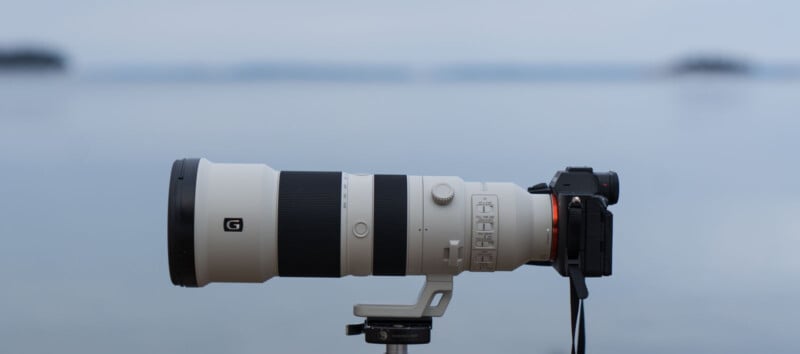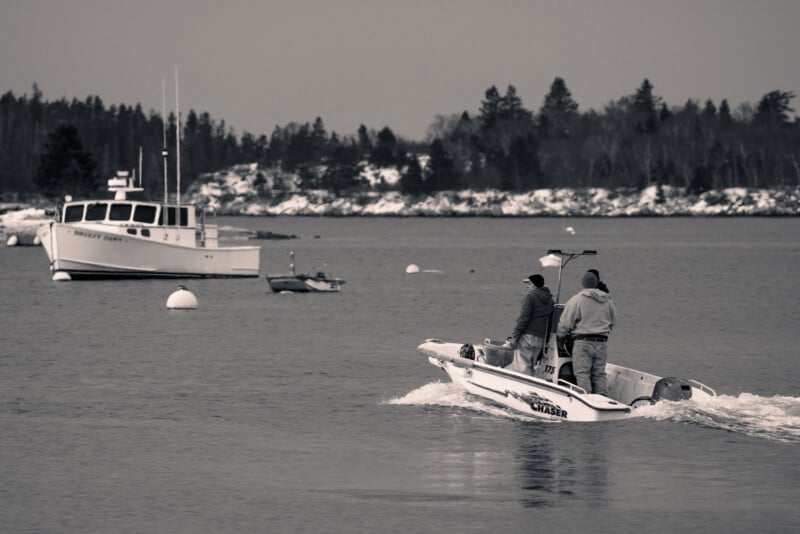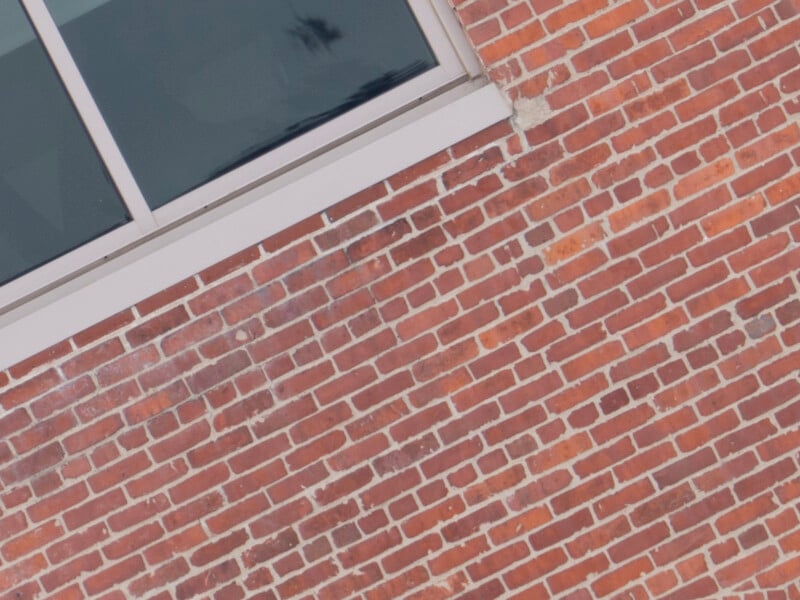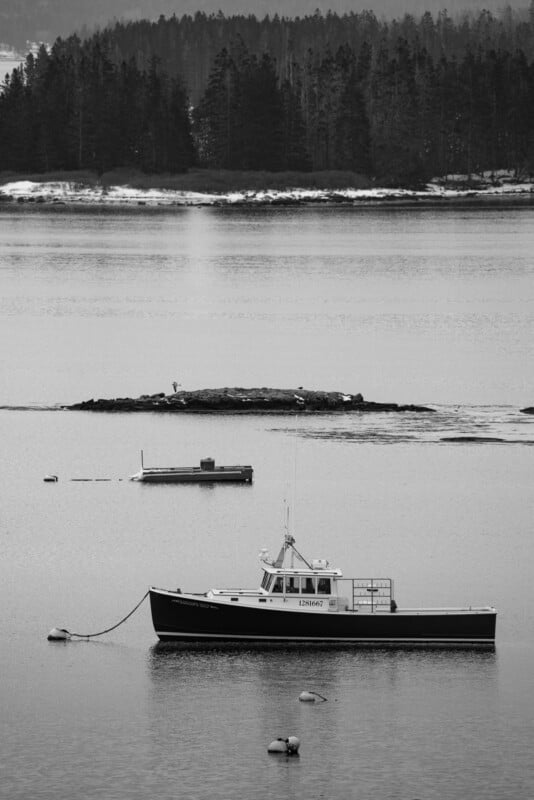Sony 400-800mm f/6.3-8 G Review: A Wildlife Photography Champion
![]()
The Sony FE 400-800mm f/6.3-8 G OSS addresses many of the shortcomings of the popular Sony 200-600mm f/5.6-6.3 G OSS, delivering an excellent telephoto zoom lens for wildlife photographers.
Since its release in June 2019, the Sony FE 200-600mm f/5.6-6.3 G OSS lens has been the go-to choice for wildlife enthusiasts who (rightfully) scoff at spending $13,000 on a Sony 600mm f/4 G Master lens. At $2,000, the 200-600mm delivers substantial value thanks to its solid build quality, reliable autofocus, and solid optical performance.
I’ve happily used the 200-600mm f/5.6-6.3 for years, primarily as a wildlife lens but occasionally for landscapes. With long-term use, I’ve become very familiar with its strengths and especially its weaknesses. In the case of the Sony 200-600mm, these weaknesses include some softness wide open at 600mm and occasionally inconsistent autofocus performance, particularly at the telephoto end.
![]()
The Sony 400-800mm f/6.3-8 G OSS promises to address these shortcomings while adding an extra 200mm of telephoto focal length, making it Sony’s longest telephoto zoom lens yet. As for whether the lens entirely lives up to these promises is a bit complicated, but the lens is a success, and almost always a better choice for Sony shooters looking for a new telephoto zoom and a legitimate upgrade option for those who already have the 200-600mm.
Sony FE 400-800mm f/6.3-8 G OSS Design and Handling: A Beefy, Well-Designed Lens
A reasonable initial reaction to the 400-800mm f/6.3-8 is, “Isn’t that just the 200-600mm?” There are some notable differences, but the similarities are undeniable. The 400-800mm f/6.3-8 is the sibling who ate a bit more as a kid and hit the gym.

The 400-800mm weighs 2,475 grams (5.5 pounds), while the 200-600mm tips the scales at 2,117 grams (4.7 pounds). This difference is not massive, and the 400-800mm balances nicely, but you feel it.
The new 400-800mm zoom lens is also a bit longer and thicker than the 200-600mm. The 400-800mm lens is 346 millimeters (13.6 inches) long without its lens hood, while the 200-600mm is 317 millimeters (12.5 inches) long. The lens hoods are the same length, although the 400-800mm trades the finicky screw-on design for a superior locking button-release design. The 200-600mm is 111.5 millimeters (4.4 inches) at its thickest point and accepts 95mm front filters. The 400-800mm is 119.8 millimeters (4.7 inches) thick at the front and accepts huge, expensive 105mm front filters.

There are some other minor differences, including a new full-time DMF switch to go alongside the four other switches that control autofocus mode (AF versus MF), focus distance (full, 10 meters to near, or 8 meters to infinity), OSS (on versus off), and OSS mode (1, 2, or 3). The lens includes three customizable function buttons and a rotating tripod collar.
Two quick notes on the tripod foot. The first is that, somewhat annoyingly, the foot is no longer removable. On the plus side, the foot no longer tapers in thickness, so it is more pleasant to hold onto when shooting. In neither case, as is typical of Sony lenses, does the foot have Arca-Swiss compatibility, so I am forced to use a tripod plate with the lens. I will never not find that frustrating, but alas.

The lens is robust, with dust and moisture resistance, so it is ready for the rigors of a professional workload that doesn’t stop for inclement conditions. It handled snow just fine, and I wouldn’t hesitate to use the lens in just about any weather.
Overall, the Sony 400-800mm f/6.3-8 G OSS has a good design and is pleasant to use. The zoom ring has a short 90-degree throw from 400mm to 800mm, making it swift and simple to zoom in. The focus ring has some resistance and doesn’t feel excessively loose and clumsy, although manually focusing a lens like this is not the norm. I wish the lens were a little lighter, as handholding it can be challenging after a while, but there’s no free lunch with a full-frame telephoto zoom lens.

Sony FE 400-800mm f/6.3-8 G OSS Autofocus: Faster and More Accurate
The Sony 400-800mm features a pair of high-speed linear focus motors, promising quick and precise autofocus performance through its entire zoom range. Fortunately, the lens lives up to this promise and is reliably fast. While I don’t have an a9 III to test the lens at 120 frames per second, it does support this burst mode, unsurprisingly.

On the Sony a7 IV and a7R V I had access to, the 400-800mm proved extremely fast. It locked focus quickly, maintained it on moving subjects, and achieved impressive hit rates.
I have two relatively minor complaints. Although the lens can focus as close as 1.7 meters (5.6 feet) at 400mm, its minimum focusing distance at 800mm, where I and many other photographers will spend a lot of their time, is three meters (just under 10 feet). The maximum magnification is comparable to the Sony 200-600mm lens and the competition, but I routinely found myself trying to get just a little closer.




The other nitpick is that autofocus accuracy was occasionally unreliable when shooting highly distant objects. This rarely matters for wildlife, as you don’t often want to take a photo of an animal hundreds of meters away. However, for landscapes, when a telephoto focal length can offer unique compositions of faraway scenes, I regularly opted to focus manually rather than roll the dice.

These are both minor qualms, and don’t move the needle much concerning my overall thoughts on the 400-800mm lens’s autofocus performance.
On the plus side, when comparing the Sony 400-800mm f/6.3-8 against the 200-600mm f/5.6-6.3 side-by-side on the same camera bodies, the 400-800mm f/6.3-8 is very noticeably faster both up close and at medium-long distances. The 400-800mm also racks focus back and forth more rapidly than the 200-600mm. Anecdotally, having done a lot of wildlife photography with the 200-600mm over the years, the 400-800mm feels much more reliable and faster in real-world use, and delivered more keepers. While individual camera bodies will impact autofocus performance overall, there is no doubt that the 400-800mm f/6.3-8 will perform better than the 200-600mm f/5.6-6.3, all else equal.




Sony 400-800mm f/6.3-8 G OSS Image Quality: Slower but Sharper
Image quality is complicated with the Sony 400-800mm f/6.3-8 lens for many reasons, but it is excellent news, by and large.
Regarding basic specs, the 400-800mm lens features 27 elements across 19 groups and six ED elements to reduce chromatic aberrations and maintain strong sharpness across the frame. The 200-600mm has 24 elements across 17 groups and has five ED elements. This is not too different, and I will be pitting the two lenses against each other shortly.

Before doing that, though, let’s look at the 400-800mm f/6.3-8 in a vacuum. In terms of sharpness, the lens is excellent from 400mm through 800mm, even when shot wide open. The lens is sharp and effectively controls chromatic aberrations, although you can run into occasional purple fringing in challenging situations.
Although I am featuring sharpness shots at wide open apertures below, a comprehensive assortment of test shots at different apertures is available in the PetaPixel Members section, alongside full-resolution RAW and JPEG versions of all my real-world photos.
400mm
At 400mm, the Sony 400-800mm f/6.3-8 performs very well. Both central and corner sharpness are good when shot wide open at f/6.3. The lens exhibits good contrast and strong control over chromatic aberrations.


600mm (and 591mm)
At the midway point, sharpness is similarly impressive. I can convince myself at 400% magnification that the lens is a teeny-tiny bit softer at 600mm than at 400mm, but it requires going way beyond anything resembling normal viewing behavior.

You will notice that the 400-800mm f/6.3-8 lens is already at f/8 at 600mm. So I figured, “why not test the lens at the longest focal length before it gets to f/8?” That occurs at 591mm, at which point the lens is at f/7.1. For reference, it goes from f/6.3 to f/7.1 at 481mm.

800mm
At 800mm, the Sony 400-800mm f/6.3-8 is ever-so-slightly softer than 600mm, but it requires considerable pixel peeping to pick the image quality apart. What is easier to see, although by no means excessive, is that purple fringing is a little higher at 800mm than at shorter focal lengths. It’s easily corrected if it’s a problem, although I never felt compelled.


Sony 400-800mm f/6.3-8 G OSS Versus the Sony 200-600mm f/5.6-6.3 G OSS
I was most curious about the battle of the Sony telephoto zooms. I have always enjoyed using the Sony 200-600mm f/5.6-6.3 and have captured plenty of great shots with it over the years, but I’ve always felt the lens left something to be desired at 600mm, especially when shot wide open at f/6.3. When situations allow, I routinely back the zoom off hair or stop down to compensate for this perceived softness.
Sony told me that the 400-800mm f/6.3-8 is sharper at 800mm than the 200-600mm is at 600mm, and spoiler alert, they weren’t lying. However, I always wanted to see how the two lenses compared not only at 800mm but at other key focal lengths, like 600mm, and to see if the 400-800mm lens wide open at f/8 was still sharper than the 200-600mm at 600mm when it is stopped down to f/8. After all, the 400-800mm f/6.3-8 is already at f/8 by the time it reaches 600mm.
A quick note, despite using identical setups, the two lenses did not perfectly align at equivalent focal lengths. It doesn’t impact the results, as the subject matter is consistent enough to grab equivalent crops.
At 200mm, the 200-600mm lens is sharp across the frame, although there is some minor fringing.

At 400mm, the first shared focal length, both lenses are f/6.3. As seen above, the 400-800mm is very good across the frame. The 200-600mm below is good, too. There is little to separate the lenses, although the 400-800mm has more contrast.

600mm is where things are the most interesting, both in terms of results and practical concerns. A telephoto zoom lens is typically used at or near the longest focal length, that’s just the nature of a telephoto — you want to fill the frame as much as possible.

At 600mm f/6.3, the Sony 200-600mm f/6.3 is noticeably softer than the 400-800mm lens is at 600mm f/8, with visibly less contrast and more purple fringing.
But I know that’s not a fair fight. While a head-to-head at respective wide open apertures is interesting, the fact remains that the 400-800mm lens is slower at 600mm than the 200-600mm is. So when stopped down to f/8, does the 200-600mm deliver a better image than the 400-800mm at 600mm f/8? Nope, and it’s not even that close.

And of course, the 400-800mm f/6.3-8 is better at 800mm f/8 than the 200-600mm f/5.6-6.3 is at 600mm f/8, too, solidifying the 400-800mm f/6.3-8 as the clear winner when it comes to sharpness at respective telephoto extremes.
Finally, although the shots do not need to be perfectly pixel-matched 1:1 with each other to prove the point, here’s a pixel-matched series for good measure, where the crops are pulled from slightly off-center.



Bokeh
Perceived image quality concerns more than just sharpness, though. While detail is critical, a good image also has a pleasing background. The 400-800mm f/6.3-8 features an 11-bladed circular aperture diaphragm, like the 200-600mm, and it delivers pleasing bokeh, although it’s not perfect. While I have plenty of real-world photos in this review showing overall background rendition, Chris and Jordan do it best with their specific bokeh test shots.


As you can see in this example, the bokeh has a soap bubble effect. There’s also a noticeable onion ring. I’m less concerned about the cat’s eye effect, which is rarely distracting, but the 400-800mm doesn’t deliver super clean bokeh. It’s not a G Master lens, after all — no fancy-schmancy XA elements here.


There’s also something else to consider concerning background separation and bokeh — the relatively slower aperture of the Sony 400-800mm f/6.3-8. I’ll discuss this more in the next section as it relates to real-world photography situations, but a slower aperture makes it harder to capture soft backgrounds.

While a 400mm f/2.8 or 600mm f/4 can easily blur a distracting background, the 400-800mm f/6.3-8 does not have this luxury. Photographers must be more careful with their compositions at slower apertures, as that branch a few feet behind a bird or forest behind a large mammal will be relatively closer to the focal plane at slower apertures.

Sony 400-800mm f/6.3-8 G OSS In the Field: An Amazing Wildlife Lens With Failed Landscape Dreams
I’m a telephoto landscape evangelist. While photographers fight over the best ultra-wide-angle zoom lens for landscapes, I’m over here thinking, “Oh boy, a new telephoto lens; I wonder how I can use that to shoot landscapes.” I routinely use the 200-600mm lens for landscapes, especially in the 200-300mm range, as this is a thoroughly underrated focal length range for general nature and landscape photography.


Whether others agree about the benefits of telephoto lenses for landscapes or not, the fact remains that I like shooting landscapes at long focal lengths. However, 400mm is perhaps too long for my tastes. I was surprised by how much I missed having more room to play at the “wide” end of the 400-800mm lens.



But that’s a minor qualm — the Sony 400-800mm f/6.3-8 G OSS is really made for wildlife photography and is it ever fun to use for that. Aside from the occasional situations when I found the slower aperture to be an issue, like in dim overcast early morning conditions, I had a blast using the lens.

The extra 200mm of reach compared to the 200-600mm lens may not sound like all that much, but it really matters, and I used the newfound reach extensively. I used the additional 200mm much more than I missed the extra 200mm at the wider end.

Crucially, the Sony 400-800mm f/6.3-8 lens is sharp and has swift autofocus. If the lens had a slightly faster aperture at 800mm and was easier to handhold, that would be great, although I appreciate that these two desires work directly against each other.

The Sony 400-800mm f/6.3-8 G OSS Is Sony’s Best Choice for Enthusiast Wildlife Photographers
![]() Despite minor shortcomings, the longer 400-800mm f/6.3-8 G OSS is undeniably superior to Sony’s popular 200-600mm f/5.6-6.3 lens, a zoom I’ve used happily for years. Sony’s new longest telephoto zoom lens is its best non-G Master telephoto lens yet and an excellent option for wildlife photography.
Despite minor shortcomings, the longer 400-800mm f/6.3-8 G OSS is undeniably superior to Sony’s popular 200-600mm f/5.6-6.3 lens, a zoom I’ve used happily for years. Sony’s new longest telephoto zoom lens is its best non-G Master telephoto lens yet and an excellent option for wildlife photography.
Its somewhat slow maximum aperture will limit its utility for some sports photography — indoor sports would be a nightmare — but that doesn’t keep the 400-800mm f/6.3-8 from being easy to recommend to wildlife-obsessed photographers like me. It’s a consistently reliable and fun lens to use.


Are There Alternatives?
Yes, lots of them. Beyond the generally inferior Sony 200-600mm f/5.6-6.3 lens, which is $900 more affordable than the new 400-800mm f/6.3-8 lens, there are also third-party offerings. While these are capped at 15 frames per second when using continuous autofocus, an increasingly important consideration as Sony’s cameras get faster, there are some very good and affordable options out there, including the Sigma 150-600mm f/6-6.3 DG DN OS ($1,499) and the Tamron 150-500mm f/5-6.7 Di III VC VXD ($1,399). While neither of these are as long or sharp, they are much more affordable and compact than the new Sony 400-800mm f/6.3-8 lens.
If photographers don’t require the versatility of a zoom lens, there is also the Sigma 500mm f/5.6 DG DN OS Sports lens for nearly the same price ($2,950). This is a fantastic lens, but you give up 300mm of reach and the flexibility of zoom in exchange for a faster aperture and the optical quality of a prime lens.


Should You Buy It?
Yes. I love telephoto zoom lenses and have used many over the years. The Sony 400-800mm f/6.3-8 G OSS is not the best I’ve used in terms of optics — although it comes close — but it is among the enjoyable thanks to its 800mm reach. It’s no slouch when it comes to performance, either, as the 400-800mm f/6.3-8 is sharper and offers better focusing than its 200-600mm sibling, a lens I have happily used for years.
Wildlife photographers with Sony cameras take notice, there’s a new option on the market, and it’s fantastic.